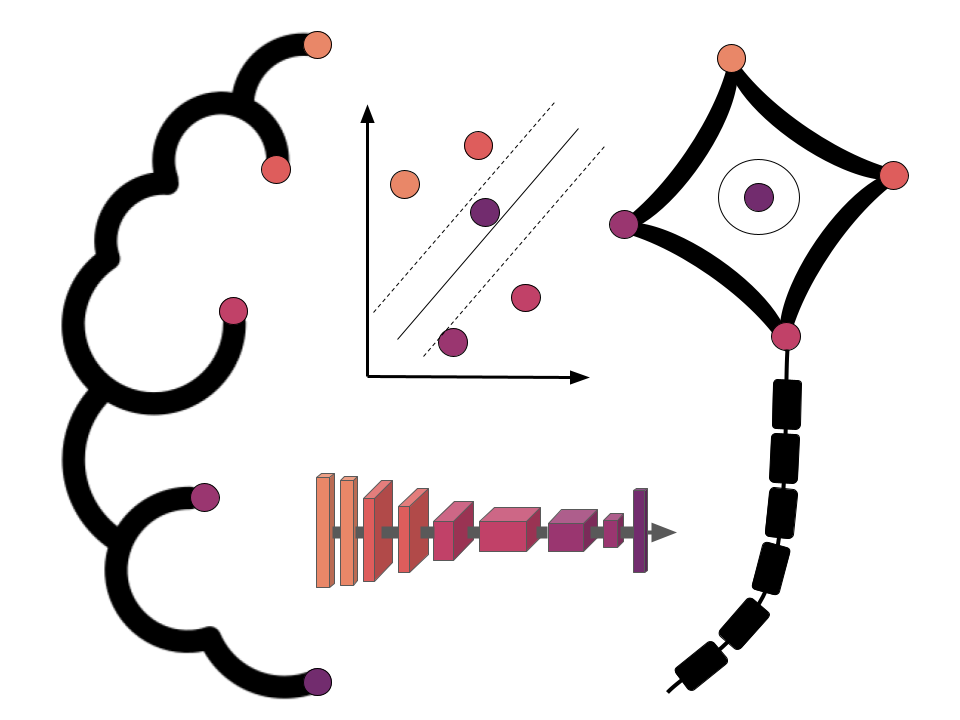Deep learning¶
We went through important general aspects of machine learning analyses (very roughly) and explored respective models, as well as analysis pipelines therein. However, now it’s time to dive deeper into the thing all the “cool kidz” are talking about: deep learning.
Comparably to the machine learning part this part of the workshop is divided into three sections within which we will spend a little more time on central parts of a given deep learning analysis pipeline. We will of course an example dataset to go through and demonstrate the respective points, but we will change it up a bit, leaving our beloved connectivity~age dataset behind and instead utilize an fMRI dataset from Zhang et al. 2013. We’ll however continue to have slides where information is mixed with interactive code and graphics. Our intention with this setup is to enable you to directly play around with the things we’ve talked about and hopefully increase knowledge transfer. However, if that doesn’t work for you, please let us know and we’ll try our best to adapt accordingly.
A note on the datasets utilized here: we’re very sorry that it’s so (f)MRI focused and we actually tried to include other modalities, specifically microscopy, but:
- couldn’t find datasets that fit the setup and framework of the workshop
- don’t have enough experience with this modality to adapt existing ones
However, we collected a few resources on machine and deep learning for microscopy that contain a variety of pre-trained models and info on how to prepare data. We also tested and checked a few things in advance so that we can help you during the hands-on in the best way possible
We said it many times before: we only have 1 1/2 h for each part and thus unfortunately cannot present a very in-depth overview, nor go through every possible detail. Instead we will focus on the points necessary to (hopefully) obtain a good understanding of these methods and (critically) evaluate them. Consider this a starting point from which you will dive further into the nitty-gritty things rather than a “full course after which you are an immediate expert”. But don’t worry, there’s of course the hands-on session during which we will have a look on your dataset and what might be possible with machine learning.
The content of this section is based on the terminology and rough analysis outline talked about in the introduction section, going from broader to more precise topics:
Time slot |
Topic |
|---|---|
11:30 AM - 12 PM |
Deep learning - model types & architectures |
1 PM - 1:30 PM |
Deep learning - model evaluation & cross-validation |
1:30 PM - 2 PM |
Deep learning - model tuning & biases |
2 PM - 2:15 PM |
yoga/dance break |
